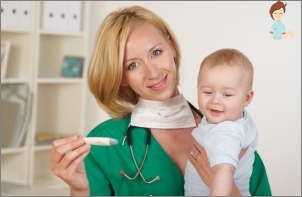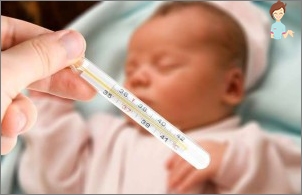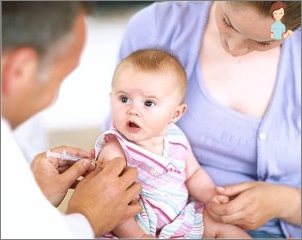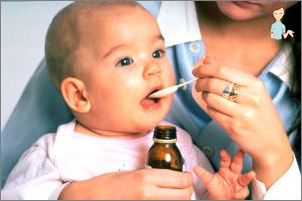Temperature in the child after vaccination
Causes of high temperature after vaccination in a child – how much she keeps? Child preparation rules for vaccination. Is it necessary to shoot down the temperature after vaccination and how – the tips for parents of babies and older children on Lady-Magazine.Com
Every modern mom once gets up to the question – to do or not do your crumbling. And most often the cause of fears – in the reaction to the vaccine. A sharp leap of temperature after vaccination – the phenomenon is not rare, and the alarms of the parents are quite justified. However, it is worth noting that in most cases such a reaction is normal, and no causes for panic.
Why after vaccination there is a rise of temperature, whether it is worth shooting it down, and how to prepare to vaccinate?
Why the child has a temperature after vaccination?
Such a reaction to the vaccination, as a leap of temperatures up to 38.5 degrees (hyperthermia), is normal and scientifically explained by a kind of immune response of the children’s body:
- During the destruction of the vaccination antigen and in the process of forming immune systems to a certain infection, the immune system is distinguished by substances that contribute to temperature increase.
- The temperature reaction depends on the quality of antigens of the vaccine and the purely individual properties of the children’s body. As well as degree of cleaning and directly quality vaccine.
- Temperature as a reaction to vaccination indicates that immunity is actively formed to a particular antigen. However, if the temperature did not jumped, it does not mean that immunity is not formed. The reaction to the vaccination is always purely individual.
Preparation of a child for vaccination
In each country – its vaccination «timetable». In the Russian Federation, vaccinations from tetanus and cough, from tuberculosis and diphtheria, from epidemic vapotitis and hepatitis B, from polio and diphtheria, from rubella.
Do or not do – parents decide. But it is worth remembering that an unmaded baby may not be taken to school and a kindergarten, and can also be prohibited from departure to certain countries.

What you need to know about preparing for vaccination?
- The most important condition is the child’s health. That is, it should be completely healthy. An obstacle to the procedure is even a runny nose or other light ailment.
- Since the complete recovery of the baby after the suffering disease, 2-4 weeks must pass.
- Before vaccination, a child inspection is required by a pediatrician.
- With a tendency to allergic reactions, an antiallergic drug is prescribed.
- Temperature before the procedure must be normal. That is, 36.6 degrees. For Croach up to 1 year, the normal temperature can be considered to 37.2.
- 5-7 days before the vaccination should exclude the introduction to the children’s diet of new products (approx. and 5-7 days after).
- Be sure to conduct analyzes before vaccination for kids with chronic diseases.
Grafting Children – categorical Contraindications:
- Complications after the previous vaccination (approx. For any specific vaccine).
- For Vaccination BCG – Weight up to 2 kg.
- Immunodeficiency (acquired / congenital) – for any kind of live vaccine.
- Malignant tumors.
- Allergic to chicken eggs and a severe form of an allergic reaction to antibiotics from the aminoglycoside group – for mono- and combined vaccines.
- Africral convulsions or diseases of the nervous system (progressive) – for DC.
- Agriculture of any chronic disease or acute infection – temporary method.
- Allergy to bakery yeast – for a vaccine from viral hepatitis in.
- After returning from a climate change ride – Temporary Method.
- After an attack of epilepsy or cramps, the term of the method – 1 month.
See also: First aid in child poisoning
Temperature in the child after vaccination
The reaction to the vaccination depends on the vaccine itself and the state of the child.

But there are common symptoms that are alarming signals and the reason to appeal to the doctor:
- Hepatitis Vaccination in
She takes place in the maternity hospital – immediately after the appearance of crumbs into light. After vaccination, the temperature and weakness may be observed (sometimes), and a small seal appears on the site where the vaccine was found. These symptoms are the norm. Other changes – reason for advice with pediatrician. Increased temperature will be the norm if it is reduced 2 days before normal indicators.
- BCG
Also held in the hospital – 4-5th day after the appearance of. By 1 month of life, infiltrate should appear on the introduction of the vaccine (approx. diameter – up to 8 mm), which covers his crust after a certain time. By the 3-5th month, instead of a crust, you can see the resulting scar. The reason to appeal to the doctor: the crust does not heal and fastened, the increased temperature of more than 2 days in combination with other symptoms, redness at the injection site of the vaccine. And one more possible complication – keloid scars (itching, red and pain, dark red color of scars), but it may not appear no earlier than 1 year after vaccination.
- Polio vaccination (preparation for oral use – «droplets»)
For this vaccination, the norm – no complications. Temperature can rise to 37.5 and only 2 weeks after vaccination, there is also a clocking chair for 1-2 days. Any other symptoms – reason to consult a doctor.
- ACDS (Tetriblyak, Diphthery, Poklush)
Norm: Increased temperature and easy malaise for 5 days after vaccination, as well as sealing and redness of the vaccine administration site (sometimes even the appearance of a bump), disappearing within a month. The reason to appeal to the doctor is too big cone, the temperature is above 38 degrees, diarrhea and vomiting, nausea. Note: With a sharp leap temperature in kids, allergies should immediately cause an ambulance (a possible complication – anaphylactic shock on a tetanus vaccine).
- Vaccination from parotitis
Normally, the children’s body reacts to vaccination adequately, without manifestation of any symptomatics. Sometimes from the 4th to the 12th day it is possible to increase the parish glands (very rarely), a slight pain in the stomach that quickly passes, low temperature, runny nose and passing, light hyperemia of the oz, a small seal at the injection site of the vaccine. Moreover, all the symptoms – without the deterioration of the general condition. Reason to call a doctor – stomach disorder, high temperature.
- Core vaccination
Single vaccination (in 1 year). Usually does not cause complications and the appearance of any explicit reaction. At the weakened baby after 2 weeks, light temperature, rhinitis, or rash on the skin can be observed (measles signs). They should disappear independently after 2-3 days. The reason for calling a doctor is a high temperature, an increased temperature, which in 2-3 days does not return to normal, the deteriorating state of the kid.
It should be remembered that even in the case when the temperature increases, its value is above 38.5 degrees – the reason to call a doctor. In the absence of serious symptoms, the condition of the baby still requires control over 2 weeks.

Vaccination conducted – what’s next?
- The first 30 minutes
It is not recommended to immediately run home. The most serious complications (anaphylactic shock) are always manifested in this period. Watch Kroha. Alarm symptoms – cold sweat and shortness of breath, pallor or redness.
- 1st day after vaccination
As a rule, it is in this period of time that the temperature response to most vaccines is manifested. In particular, DC is the most reactor. After this vaccine (with its value, no more than 38 degrees and even with normal indicators) it is recommended to put a candle with paracetamol or ibuprofen. With raising above 38.5 degrees give an antipyretic. Temperature does not fall? Call your doctor. Note: It is important not to exceed the daily dosage of the antipyretic (read the instructions!).
- 2-3 days after vaccination
If the vaccine contained inactivated components (poliomyelitis, hemophilic stick, ADS or ADC, hepatitis B), a kid should be given an antihistamine drug to avoid an allergic reaction. Not wanting to fall out the temperature is shot down by antipyretic (familiar to the child). Temperature leap above 38.5 degrees – reason to urgently cause a doctor (the development of convulsive syndrome).
- 2 weeks after vaccination
It is in this period that it should be waiting for the reaction to the vaccination against rubella and measles, poliomyelitis, pigs. The temperature rise is most often found in the interval from the 5th to the 14th day. Strong temperatures should not jump, so there is enough candles from paracetamol. Another vaccine (any other than those listed) provoking hyperthermia during this period is the cause of the disease of the baby or teething.

What to do mom while raising the temperature at the kid?
- Up to 38 degrees – we use rectal candles (especially before bedtime).
- Above 38s – give syrup with ibuprofen.
- The temperature does not fall after 38 degrees or grows even higher – we call a doctor.
- Mandatory at a temperature: Moisturize the air and carry out the room to a temperature of 18-20 degrees indoors, let me drink – often and remember, we reduce to a minimum (if possible) meals.
- If the place of administration of the vaccine inflamed, it is recommended to make a row with a solution of novocaine, and the seal is lubricated with a verkin. Sometimes it helps to reduce the temperature. But in any case, you should consult with the doctor (in extreme cases, call «ambulance» And advise with your doctor by phone).
What should not be done if there is a high temperature after vaccination?
- Giving a child aspirin (fraught with complications).
- Wipe vodka.
- Walk and bathe.
- Frequently / rich feed.
And do not be afraid once again call the doctor or in ambulance: it is better to be restrained than to skip the alarming symptom.


